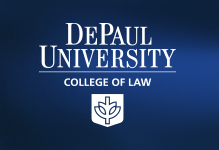Home > Law > DePaul Journal of Sports Law > Vol. 17 > Iss. 1
Article Title
Abstract
The future of the NBA’s labor relations could be significantly impacted by the COVID-19 pandemic and the recent civil unrest around the country. The current NBA collective bargaining agreement was approved in 2016. In the four seasons following its approval, both owners and players were seemingly pleased with the general state of the league. The NBA’s annual revenue ballooned from $5.2 billion in 2016 to $8.8 billion in 2019, and there were few reports of any significant tension between owners and the Players Association. However, 2020 threw two wrenches that may crucially affect both the immediate and long-term relationship between owners and players: COVID-19 and the civil unrest around the country.
The COVID-19 pandemic has rocked every facet of the legal world. This is especially true for labor relations related to force majeure clauses. Fallout from the pandemic has provided unique challenges for the NBA going forward including its force majeure provision, player-safety concerns, diminished revenue, and potential salary cap deletion. This paper will analyze how the parties will likely bear this burden, what compromises the parties can make, and how this issue changes the parties’ standing leverage.
As massive protests swept the nation while the NBA was on hiatus in in June of 2020, many players participated in demonstrations and expressed their support for the Black Lives Matter movement. When the league restarted play in July, it did so with messages of social justice on the court and on the back of players’ jerseys. After video surfaced of a police officer in Kenosha, Wisconsin shooting Jacob Blake in the back, the players spontaneously initiated one of the more notable strikes in professional sports history. Though the strike ended within 24 hours and the playoffs resumed a few days later, the players’ message to owners was clear: they expect a proactive approach to fighting racial injustice, instead of a reactive one. There is understandable uncertainty to how stable the league will be the next time a current event causes racial justice to be the crux of the conflict between owners and players. This paper will analyze the legal standing of “wildcat” strikes, how owners have attempted to satisfy the players’ demands thus far, and how the issue of racial injustice could impact their relationship going forward.
Part I of this article will introduce the issues to be discussed. Part II of this article will provide a background to the history of force majeure clause disputes amidst pandemics, a brief history of wildcat strikes, and how these apply to the NBA’s current situation. Part III of this article will discuss what results players and owners are hoping for from labor negotiations, how the two parties can compromise, and potential recommendations to the collective bargaining agreement that account for recent events. Part IV of this article will conclude with a summary of the league’s current standing and present final recommendations for owners and players.
Recommended Citation
Bennett A. Herbert,
A Global Pandemic and a Wildcat Strike: How COVID-19 and Civil Unrest Could Impact the NBA’s Labor Relations,
17
DePaul J. Sports L. & Contemp. Probs.
(2021)
Available at:
https://via.library.depaul.edu/jslcp/vol17/iss1/4
